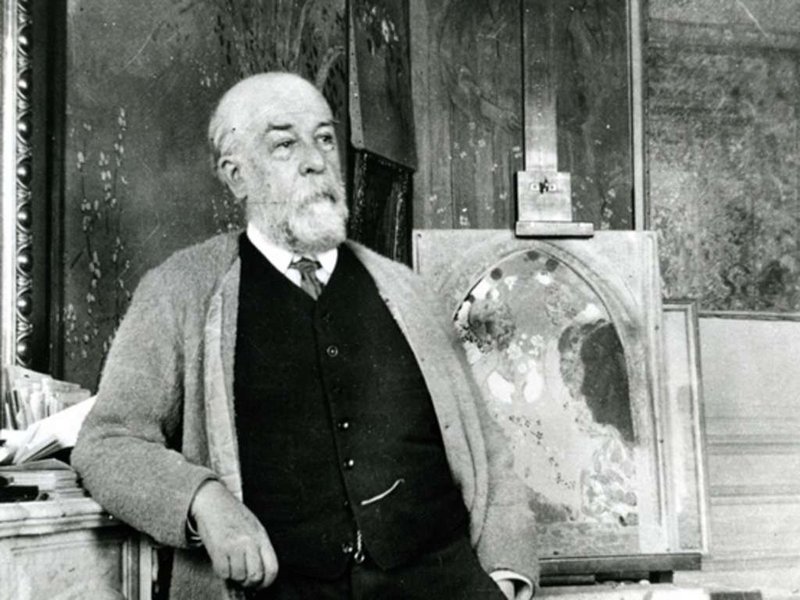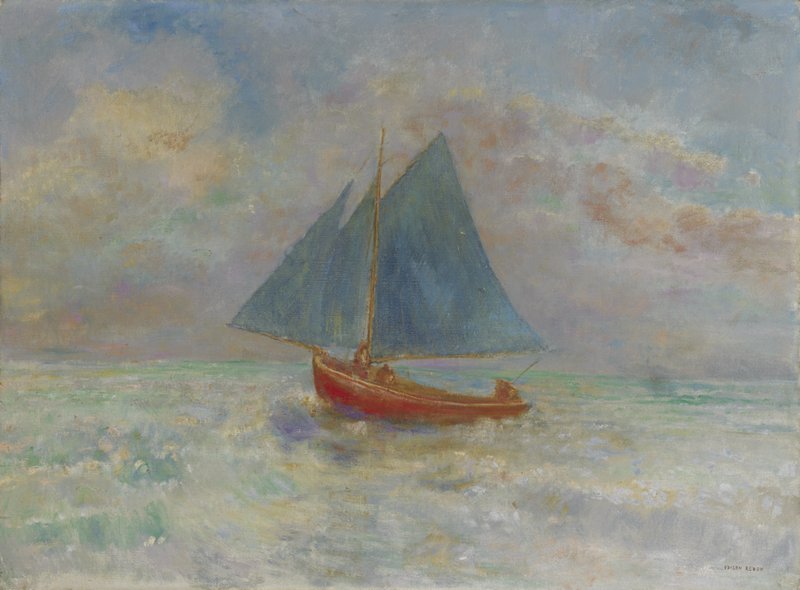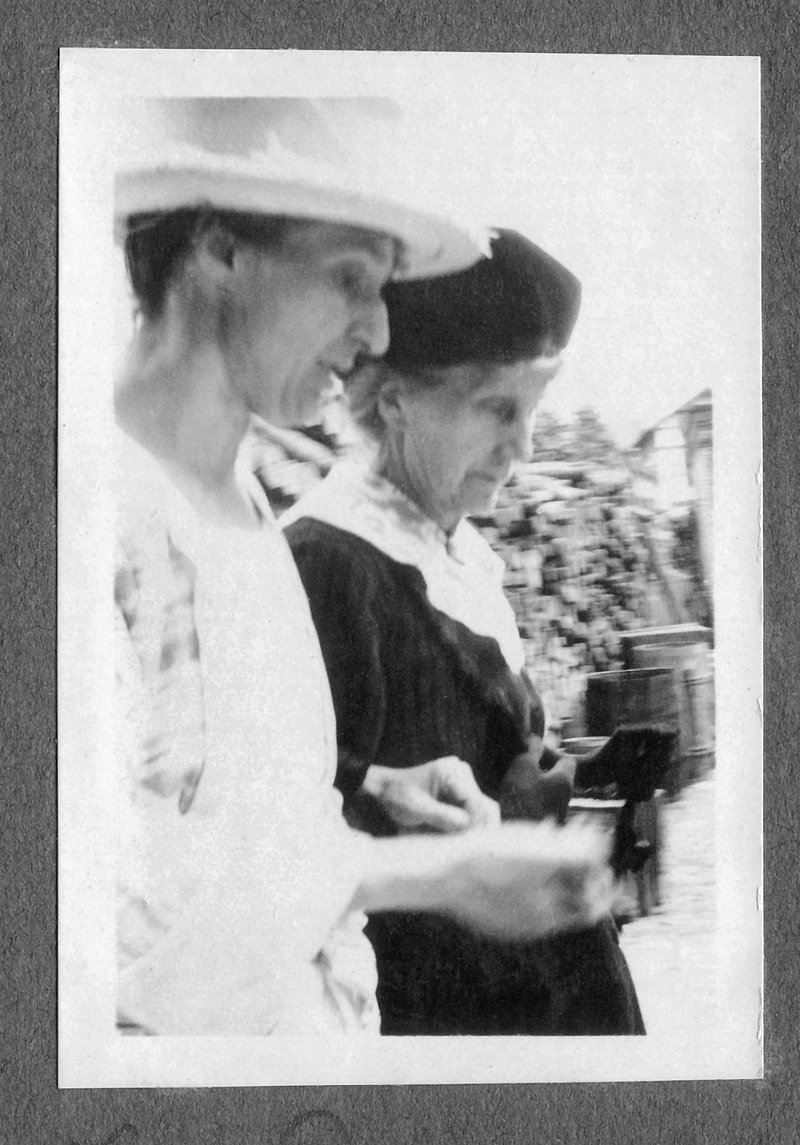The friendship with Odilon Redon

Odilon Redon in his studio
In the Hahnloser family there is an anecdote about Hedy's first encounter with Odilon Redon. She was a great admirer of the French artist and wanted to get to know him. Because his paintings had made such a modern and fresh impression on her, she imagined a young, wild artist. When she actually stood in front of his door and a 73-year-old man with a white beard – Odilon Redon – appeared, she asked where his son was, as she was looking for him. He replied coolly: "Le peintre c'est moi".
Redon was a very reserved person and not an easy character to grasp. The Hahnlosers were not friends with him in the true sense of the word, but they built up a certain relationship with him over the years. Above all, they always admired his work, bought works from him and, where necessary, defended him against criticism.
In 1919, three years after Redon's death, Arthur Hahnloser and Richard Bühler were instrumental in organising the first comprehensive retrospective of the artist's work, which was held at the Kunstmuseum Winterthur. Camille Redon, the painter's widow, travelled to Winterthur for the event and stayed at the Villa Flora for a week.
On this occasion, Hedy Hahnloser wrote a detailed review of Redon's work in the museum's own magazine Das Graphische Kabinett, in which she paid tribute to him as a graphic artist. She emphasised Redon's modernity, describing the then hardly understood artist as a "co-creator of and contributor to the spirit of his time".

Odilon Redon, Le bateau rouge, around 1910
Kunst Museum Winterthur, Hahnloser/Jaeggli Stiftung
Foto: Reto Pedrini, Zürich
Redon's oeuvre can be divided into a first phase, in which he created exclusively black and white works, and a second, more colourful period. In the last decade of the 19th century, Redon made the breakthrough to colour, which he continued to develop with increasing intensity until the end of his life. This probably also had a lot to do with his private environment. His new, harmonious family life with his wife Camille and his son Ari gave him confidence and support. In addition, the positive response from younger artists, especially the Nabis, boosted his self-confidence. Painters like Bonnard and Vuillard had great respect for Redon and he in turn appreciated their new painting. Bonnard wrote in the magazine La Vie in 1912: "I have the greatest admiration for Odilon Redon. What impresses me most in his work is the combination of two almost opposing qualities: a very pure pictorial material and a very mysterious expression."

Camille Redon and Hedy Hahnloser
By 1913, the Hahnlosers already owned five paintings by Redon and they bought another one from a Parisian art dealer, entitled Le rêve or La pensée. Soon, however, they were no longer happy with it, and Hedy wrote to the artist: "La Pensée suffers a bit from the richness and abundance of the other five. But I would never let the painting out of my hands without a compensation for this 'tone' in your palette. I absolutely need this note, because it represents the translation of a feeling of your imagination in the form of the human figure, or at least into a phantom of such a form." The artist's wife then replied that her husband would like to revise her painting and that he was very interested in what paintings they had. Camille Redon went on to say that he had once had to sell many works prematurely due to financial difficulties that he might have wanted to revise. And so he would be happy to look at Le Rêve again. Hedy and Arthur were delighted and sent photos of their collection, as they were naturally eager to find out what the painter himself thought of their selection of art, "which moved us so much". Redon, who usually had his wife write on his behalf, replied personally and offered to revise the work. Five months later, Hedy was able to confirm to the painter having received the modified work and write: "It really does have a much better effect".
Although the relationship between Redon and the Hahnlosers was not as close as with other artists, this story in particular shows how important personal interaction with artists was for Hedy and Arthur.
By the way
Odilon Redon’s letter to the Hahnlosers is the only surviving original letter from the painter in Winterthur. It is all the more valuable because his handwriting bears witness to a highly sensitive personality.


